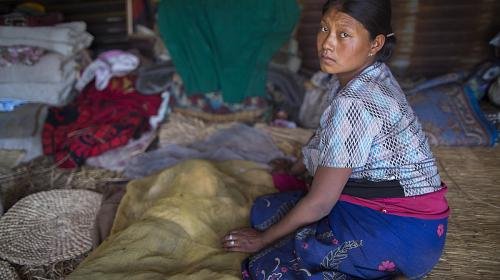Project Report
| May 15, 2015
UPDATE - May 15, 2015
![Mingwa Lama - 2015 PRASHANTH VISHWANATHAN/CARE]()
Mingwa Lama - 2015 PRASHANTH VISHWANATHAN/CARE
Thank you for your commitment to CARE following the Nepal earthquake. What follows below is the latest on our response:
After a second big earthquake hit 47 miles northeast of Kathmandu on Tuesday, the situation is even worse than before in Nepal. In Sindhupalchowk, an area which was already badly affected by the first earthquake, the remaining structures still standing after the first earthquake have now also been destroyed. In total, more than 8,000 people have now died, thousands have been injured and about 700,000 houses have been either destroyed or damaged. According to UN OCHA, over 8 million people have been impacted by the earthquake, and over 3 million are in need of food assistance.
Food, clothing, bedding and household items lay buried under ruins of people’s houses. People urgently need clean water, emergency shelters, medical and psychosocial assistance. Extensive damage has been apparent in Kathmandu valley but the situation in remote areas is of particular concern. In some areas of Gorkha and Sindhupalchowk, over 80 percent of houses have been destroyed or severely damaged. Remote areas are particularly vulnerable and difficult to access. Even during non-disaster conditions travel is challenging, but now roads are completely inaccessible due to severe cracks and debris and landslides. Most of these areas are accessible by helicopter only. With thunderstorms occurring, helicopters are having difficulty flying with the cloud cover in the mountains. Aid workers are also walking for hours to try and reach some villages.
How is CARE responding?
- Relief efforts started immediately after the earthquake hit Nepal. CARE has deployed emergency staff from around the world to join 150 CARE Nepal local staff to scale up the emergency response. CARE has already supported more than 13,000 people with emergency supplies such as clean water, food, shelter, reproductive health and hygiene kits.
- CARE will focus on areas outside of Kathmandu, as some villages in these areas have been completely flattened and are only accessible by helicopter and relief workers are walking for hours to try and access people who are in desperate need of help. In Gorkha, a rural area near the epicenter of the earthquake, where over 80 percent of the homes have been damaged or destroyed, CARE distributes shelter and hygiene kits that include some items specific for women like diapers for the babies and sanitary napkins, as well as soap, toothbrushes and towels.
- Women/girls are always the most vulnerable when disaster strike, facing gender-based violence, psychosocial difficulties, malnutrition, etc. CARE is particularly concerned about the 14,000 women who are expected to give birth in Nepal over the next month. An estimated 2,000 of them are at risk of experiencing complications that require emergency obstetric care. CARE is distributing reproductive health kits to villages in Gorkha that include safe birthing kits, essential medicines and supplies for birthing attendants to handle medical complications in delivery. In total, CARE has reached nearly 8.000 vulnerable people in Gorkha so far.
- In Sindhupalchowk CARE airlifted food to remote areas.
- In the Lamjung district, CARE distributed food, hygiene kits and emergency shelter to over 1,200 people and reached more than 4,200 in Kathmandu Valley with food, sleeping mats and clean water. In Dhading, CARE could so far support more than 650 people with shelter.
- Over the next month CARE plans to distribute weather resistant emergency shelter to 30,000 people in preparation for the monsoon rains.
- To help meet the specific needs of pregnant women, new mothers and children, CARE is distributing water purification to provide clean water, particularly for pregnant women and children who are susceptible to water-borne illness such as diarrhea. CARE is also distributing family kits and hygiene kits that include blankets to keep children and infants warm, diapers for newborns, and basic hygiene kits that include soap and sanitary napkins and underwear for women.
- We know from previous disasters that this will be a long-term response, to help the people of Nepal survive the initial disaster, but also to rebuild their homes, infrastructure and lives. As the response evolves, CARE transitions to providing more durable solutions, allowing families to build back safer homes and reduce their vulnerability to natural disasters. We will provide technical support, to help them make changes to the way they build, so their homes are more resilient when the next earthquake strikes. And where necessary, we will provide livelihood support or cash vouchers to help accelerate their own rebuilding process.
CARE has worked in Nepal since 1978, in areas including food Security, HIV/AIDS, health, education, water and sanitation, and the empowerment of women and girls. CARE is very familiar with the regions affected by the earthquake and implements projects in the western and central region.
![Share on Twitter]()
![Share on Facebook]()
